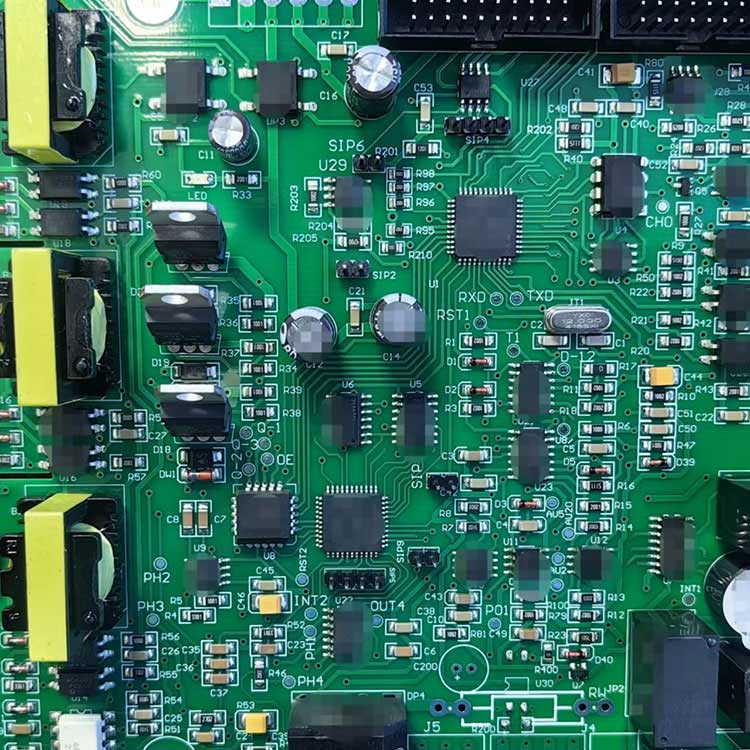
As a critical component of the smart grid system, Smart Grids System PCB Assembly comes with a unique set of challenges. Below are some of the most significant obstacles that manufacturers might face while implementing it:
1. Environmental Challenges
2. Technological Challenges
3. Security Challenges
4. Design challenges
Each of these challenges requires a particular solution that manufacturers have to take into account while manufacturing Smart Grids System PCB Assembly.
Smart grid technology requires that manufacturers produce environmentally friendly products. Smart grids are designed to reduce carbon emissions and minimize the ecological footprint. Therefore, manufacturers have to carefully consider the materials used in their products and their effect on the environment.
The smart grid system relies on advanced technology that requires an equally advanced PCB assembly. Miniaturizing the components of Smart Grids System PCB Assembly to fit into the limited space available on the board presents a significant challenge. Additionally, the use of advanced materials that can withstand harsh conditions is necessary but adds to the complexity of the assembly process.
The smart grid system is vulnerable to cyber-attacks that can cause significant damage. Therefore, Smart Grids System PCB Assembly must have robust security features to protect it from potential cyber threats. The boards have to be designed to support an encryption algorithm, and access control mechanisms must be in place to prevent unauthorized access.
Designing Smart Grids System PCB Assembly is a complex process due to multiple factors. The board needs to be functional while maintaining a lean design. The assembly process of Smart Grids System PCB Assembly also needs to be optimized for high volume production, making it a challenging task.
In conclusion, Smart Grids System PCB Assembly is a critical component of the smart grid system. It has unique manufacturing challenges that must be considered during the design and production stages. However, with the right combination of technology, expertise, and experience, manufacturers can overcome these challenges and produce high-quality Smart Grids System PCB Assembly.
1. Li, X., & Wong, K. P. (2017). A review on communication networks for electric vehicle charging infrastructures. Renewable and sustainable energy reviews, 68, 391-403.
2. Tang, W., Wu, L., & Lai, Y. (2018). A survey on demand response in smart grids: Mathematical models and approaches. Sustainable cities and society, 41, 786-802.
3. Aazami, A., Mehrizi-Sani, A., & Shafie-Khah, M. (2017). A review of microgrids functionalities in different operational modes of distribution systems. Renewable and Sustainable Energy Reviews, 70, 128-138.
4. Jiang, X., Chen, Y., Yue, D., & Sun, D. (2018). A flexible distributed control approach for autonomous microgrid operation and management. Applied Energy, 227, 585-599.
5. Zhang, Y., Donde, V., & Verma, A. K. (2017). A review of communication architectures and technologies for smart grid systems. ISA transactions, 68, 89-102.
6. Jalilvand, A., & Shahidehpour, M. (2016). Smart distribution systems: A review of modern distribution concepts and EMP-based control architectures. Applied energy, 177, 711-721.
7. Qiao, J., Wen, F., Zhao, Y., & Chen, Z. (2017). A survey on demand response management in smart grid environment. Frontiers of Information Technology & Electronic Engineering, 18(6), 791-808.
8. Liu, M., Dong, Y., Yu, D., & Liu, Y. (2018). State-of-the-art methods in forming synergies between energy storage and photovoltaic power generation: A review. Applied Energy, 217, 64-85.
9. Xin, Z., & Wei, W. (2017). Design and Implementation of Smart Wireless Sensor Networks for Agricultural Applications. Smart Grid and Renewable Energy, 8(5), 121.
10. Gholizadeh, H., & Siano, P. (2017). Smart grid readiness evaluation from an end user perspective. Sustainable cities and society, 29, 207-218.
Hayner PCB Technology Co., Ltd. is a leading manufacturer of high-quality PCB assemblies, including Smart Grids System PCB Assembly. Our efficient manufacturing process and expert team enable us to produce Smart Grids System PCB Assembly that meets global standards. With over ten years of experience in PCB manufacturing, we have served countless customers across various industries, such as healthcare, transportation, and renewable energy. Our high-quality services and products have made us a preferred supplier for companies worldwide. For more information, please visit our website: https://www.haynerpcb.com/ or contact us at sales2@hnl-electronic.com
